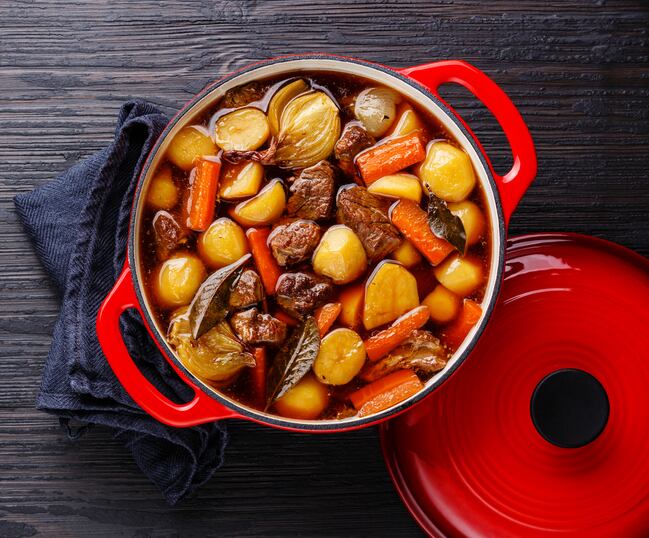Sustainable production, processing and consumption are integral elements of the EU 'farm to fork' strategy. With the strategy’s current feedback period now closed, industry interest as to how strategic plans, specific targets and anticipated developments are set to advance are high.
The background of the strategy
Since taking office in December 2019, President of the European Commission, Ursula von der Leyen, has published political guidelines that emphasise the importance of ensuring the European population has access to “nutritious, affordable and safe food”. By also centring on providing support to farmers and fishers, the new farm to fork strategy strives to create “sustainable food along the whole value chain”.
Setting out that the European Green Deal cannot be achieved without tackling the issue of food sustainability, the European Commission announced the farm to fork strategy on 11th December, as part of its Green Deal Communication.
Set for its reveal in spring 2020, it will detail the core deliverables required to secure a “fair, healthy and environmentally-friendly food system”.
Sustainable food strategy
The farm to fork strategy has strong connections with, and directly contributes to, the new Circular Economy Action Plan, the 2030 EU Biodiversity Strategy, the Forestry Strategy, the EU Climate ambition and the Zero Pollution Strategy — as well as playing a “pivotal role” in 2030 Sustainable Development Agenda by contributing to the United Nations Sustainable Development Goals.
With the focus on improving and optimising European food policy, the European Commission argues that a “sustainable food strategy is key to achieving the goals of the European Union’s Green Deal”.
As a result, it sets out the regulatory and non-regulatory measures needed to create more efficient, climate-smart systems that provide healthy food, while creating and retaining a good living for EU farmers and fishermen.
A key factor of the strategy is the “need to tackle a new, healthier, fairer and more sustainable approach to food systems”, added David Pineda Ereño, Advisor on Strategy, Policy and Regulation at DPE International Consulting.
A key goal of the farm to fork strategy is to “change the way food is produced and consumed without compromising its safety, quality and affordability”, Pineda Ereño stated. “It should now also become the global standard for sustainability,” the European Commission said.
Achieving global sustainability standard: Tackling pesticides, fertilisers, organic farming and obesity
Detailing the specific targets associated with the strategy, Pineda Ereño highlighted how these include: “Reducing the dependency of chemical pesticides and fertilisers; improving the nutritional contribution of foods; improving the sustainability of packaging; empowering consumers to make sustainable food choices; and promote healthy and sustainable diets; among others.”
The strategy will spearhead actions to considerably lower both the use and risk of chemical pesticides, along with the use of fertilisers and antibiotics. The European Commission will engage in stakeholder dialogue to guide these reductions. Regarding its regulatory framework plans, the Commission will need to mirror scientific evidence on the risk created by chemicals such as endocrine disruptors.
Creating a circular economy by reducing the environmental impact of the food processing and retail sectors is a core aim of the Commission’s actions, which it will implement by addressing food waste, packaging, storage and transportation.
Focusing on providing consumers better information, the farm to fork strategy strives to promote and encourage sustainable food consumption and affordable healthy food for all, whilst lowering food waste. Information communicated to consumers will revolve around where the food comes from, the food’s nutritional value, and its environmental footprint.
Sustainable challenges
The farm to fork’s sustainable strategic goals are presented amid the backdrop of numerous food system issues. As such, while the transition into more sustainable food systems is ongoing, it “needs to accelerate”, the European Commission stated.
In the European Union, approximately 20% of food production is wasted, yet 36 million of the population are unable to have a quality meal every second day. Coupled with increasing obesity rates and subsequent diet-related diseases, the strategy aims to ensure food security is present and a food environment that makes healthy diets “the easy choice” for consumers, achievable.
The European Public Health Alliance (EPHA), a non-profit association, states that an action plan for the creation of healthy and sustainable food environments is necessary to “facilitate the uptake of more healthy, tasty, plant-rich diets with less and better animal products”.
In response to the farm to fork strategy, the EPHA stated that it should be driven by targets, guided by sustainable dietary recommendations, and led by good policies. In addition, the organisation states that the strategy should present a dedicated framework towards less and better meat, dairy and eggs consumption and production in the EU, along with implementing mainstream food and nutrition security into EU social policy actions.
Emphasising the six key targets it is recommending, the EPHA details:
- 500 grams of fruit and vegetables per person per day consumed as a population-based average by 2030
- 0% increase in childhood obesity in the EU by 2025/2030
- 20-30% decrease in obesity among the adult population by 2030
- 0% of the population unable to afford a nutritious meal every second day by 2030
- Raise the level of exclusive breastfeeding in the first 6 months of a child’s life up to at least 50% by 2030
- Ensure at least 85-90% of farm antibiotic use should be for individual treatment. At most 10-15% should be for group treatments by 2030.




